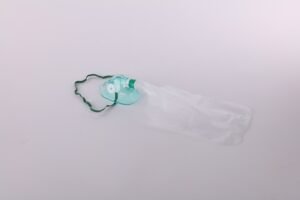PCR technology must have artificially synthesized reasonable primers and extracted sample DNA, and then perform automatic thermal cycling, and finally perform product identification and analysis. At present, primer design and synthesis can only be carried out in a few research institutes, institutes, and clinics with strong technical strength. The application only needs to purchase the PCR detection kit to start the work.There are many influencing factors in the PCR automatic thermal cycle. For different DNA samples, the amount of various components added in the PCR reaction and the temperature cycle parameters are inconsistent.
Several main influencing factors are now introduced as follows.
One, temperature cycle parameters
In the PCR automatic thermal cycle, the most critical factor is the temperature of denaturation and annealing. As shown in the operation example, the conditions of denaturation, annealing and extension are: 94℃60s, 37℃60s, 72℃120s, a total of 25~30 A cycle, the amplified fragment is 500bp. Here, the time of each step should be calculated after the reaction mixture reaches the required temperature. In the automatic thermal cycler, the time from the original temperature of the mixture to the required temperature takes 30-60s The length of this lag time depends on several factors, including the type of reaction tube, wall thickness, volume of reaction mixture, heat source (water bath or heating block), and the temperature difference between the two steps, which should be adequately provided when setting the thermal cycle Pay attention to and consider, and actual measurement should be carried out on each instrument.
Another important consideration about the thermal cycle time is the distance between the two primers; the farther the distance, the longer it takes to synthesize the full length of the target sequence. The reaction time given above is based on the optimal synthesis length of 500bp The target sequence is drawn up. Here is an introduction to the selection of various temperatures.
1. Template denaturation temperature The denaturation temperature determines the temperature at which the double-stranded DNA melts in the PCR reaction. If the denaturation temperature is not reached, no single-stranded DNA template will be produced, and PCR will not start. Low denaturation temperature means incomplete denaturation, DNA double-stranded It will renature quickly, thus reducing the yield. Generally 90~95℃. Once the sample reaches this temperature, it should be quickly cooled to the annealing temperature. DNA denaturation only takes a few seconds, and it is not necessary for a long time; on the contrary, you should try your best at high temperature. Shorten it to maintain the activity of Taq DNA polymerase. The maximum denaturation temperature after adding Taq DNA polymerase should not exceed 95°C.
2. Primer annealing temperature The annealing temperature determines the specificity and yield of PCR; if the temperature is high, the specificity is strong, but if the temperature is too high, the primer cannot be firmly combined with the template, and the DNA amplification efficiency is reduced; the temperature is low, the yield is high, but too low can cause primer and template mismatch , Non-specific products increase. Generally, start with the reaction condition of 37℃, set up a series of control reactions to determine the optimal annealing temperature for a specific reaction. It can also be inferred based on the (G+C)% content of the primers to grasp the test The starting point of the general test, the annealing temperature Ta (annealing temperature) is 5℃ lower than the melting temperature TTm (melting temperature) of the amplification primer, which can be calculated according to the formula:
Ta = Tm-5℃= 4(G+C)+ 2(A+T) -5℃
Among them, A, T, G, and C respectively represent the number of corresponding bases. For example, for a primer of 20 bases, if the content of (G+C)% is 50%, the starting point of Ta can be set at 55°C. At a typical primer concentration (such as 0.2μmol/L), the annealing reaction can be completed in a few seconds, and long-term annealing is not necessary.
3. The choice of primer extension temperature depends on the optimal temperature of Taq DNA polymerase. Generally 70~75℃, the standard rate of enzyme catalyzed nucleotides at 72℃ can reach 35~100 nucleotides/sec. per minute. The length of 1kb can be extended, and its speed depends on the composition of the buffer solution, pH value, salt concentration and the nature of the DNA template. If the amplified fragment is shorter than 150bp, the extension step can be omitted, and it becomes a dual temperature cycle, because of Taq DNA The polymerase is sufficient to complete the synthesis of short sequences at the annealing temperature. For short sequence fragments between 100 and 300 bp, it is effective to use a fast and simple dual-temperature cycle. At this time, the primer extension temperature is the same as the annealing temperature. For For DNA fragments above 1kb, the extension time can be controlled within 1 to 7 minutes according to the length of the fragment. At the same time, gelatin or BSA reagent should be added to the PCR buffer to keep the Taq DNA polymerase active and stable for a long time. Sex; 15%-20% glycerol helps to amplify about 2.5kb or longer DNA fragments.
4. The number of cycles of conventional PCR is generally 25 to 40 cycles. The general error is that the number of cycles is too much, the non-specific background is serious, and the complexity increases. Of course, the number of cycles of the reaction is too small, and the yield is low. Therefore, it is necessary to ensure that the product is obtained. Under the premise of rate, the number of cycles should be minimized.
After the amplification is completed, the sample is cooled and stored at 4°C.
2. Primer Primer Design
To amplify template DNA, you must first design two oligonucleotide primers. The so-called primers are actually two oligonucleotide fragments that are complementary to the target DNA sequence to be amplified. The distance between the two primers determines the length of the amplified fragment. , The 5’ends of the two primers determine the positions of the two 5’ends of the amplified product. It can be seen that the primers are the key to determining the length, position and results of the PCR amplified fragments, and the primer design is more important.
The necessary condition for primer design is that the target DNA sequence complementary to the primer must be known. The sequence between the two primers is not necessarily clear. The two known sequences are generally 15-20 bases, which can be synthesized with a DNA synthesizer. Corresponding to two complementary primers, in addition, the principles generally followed in primer design include:
1. The primer length is calculated according to statistics, and the probability that an oligonucleotide sequence of about 17 bases may appear in the human genome is once. Therefore, the primer length is generally not less than 16 nucleotides, and the highest No more than 30 nucleotides, and the best length is 20-24 nucleotides. Such short oligonucleotides will not form a stable hybrid at the polymerization temperature (passing 72°C). Sometimes it can be at 5′ Add sequences that are not complementary to the template at the end, such as restriction enzyme sites or promoters, to complete gene cloning and other special needs; the primer 5’end biotin label or fluorescent label can be used for various purposes such as microbial detection.
Sometimes the primer doesn’t work, the reason is unknown, you can move the position to solve it.
2. The composition of (G+C)% content primers should be uniform, and try to avoid containing the same base polymer. The (G+C)% content in the two primers should be as similar as possible, in the known amplified fragment (G+C) % Content should be close to the fragment to be amplified, generally 40% to 60% is better.
3. The inside of the primer should avoid the formation of obvious secondary structures, especially hairpin structures. For example:
4. There should be no complementation between the two primers between the primers, especially at the 3’end of the primer. Even if it cannot be avoided, the 3’end complementary base should not be greater than 2 bases, otherwise it is easy to form a “primer dimer” Or “Primer dimer” (Primer dimer). The so-called primer dimer is essentially a double-stranded DNA fragment formed by extension of one primer on the other primer sequence under the action of DNA polymerase. , Is a common by-product of PCR, and sometimes even becomes the main product.
In addition, avoid homologous sequences between the two primers, especially oligonucleotide fragments with more than 6 consecutive identical bases, otherwise the two primers will compete with each other for the same site of the template; similarly, the primers and the target DNA to be amplified Or other sequences of the sample DNA cannot have homologous sequences of more than 6 bases. Otherwise, the primers will bind to other sites, reducing specific amplification and increasing non-specific amplification.
5. Primer 3’end pairing DNA polymerase adds a single nucleotide to the 3’end of the primer. Therefore, the pairing requirements of 5-6 bases from the 3’end of the primer and the target DNA must be precise and strict to ensure effective PCR amplification. .
Whether the primer design is reasonable can be verified by computer search using PCRDESN software and American PRIMER software.
Artificially synthesized oligonucleotides should preferably be purified by chromatography (chromatography) or PAGE to remove impurities such as short chains that have not been synthesized to full length. Purified primers stored in 25% acetonitrile solution at 4°C can prevent microorganisms Under normal circumstances, unused primers should be stored in a refrigerator at -20°C. The primers can be stored in liquid for 6 months, and can be stored for 1 to 2 years after lyophilization.





